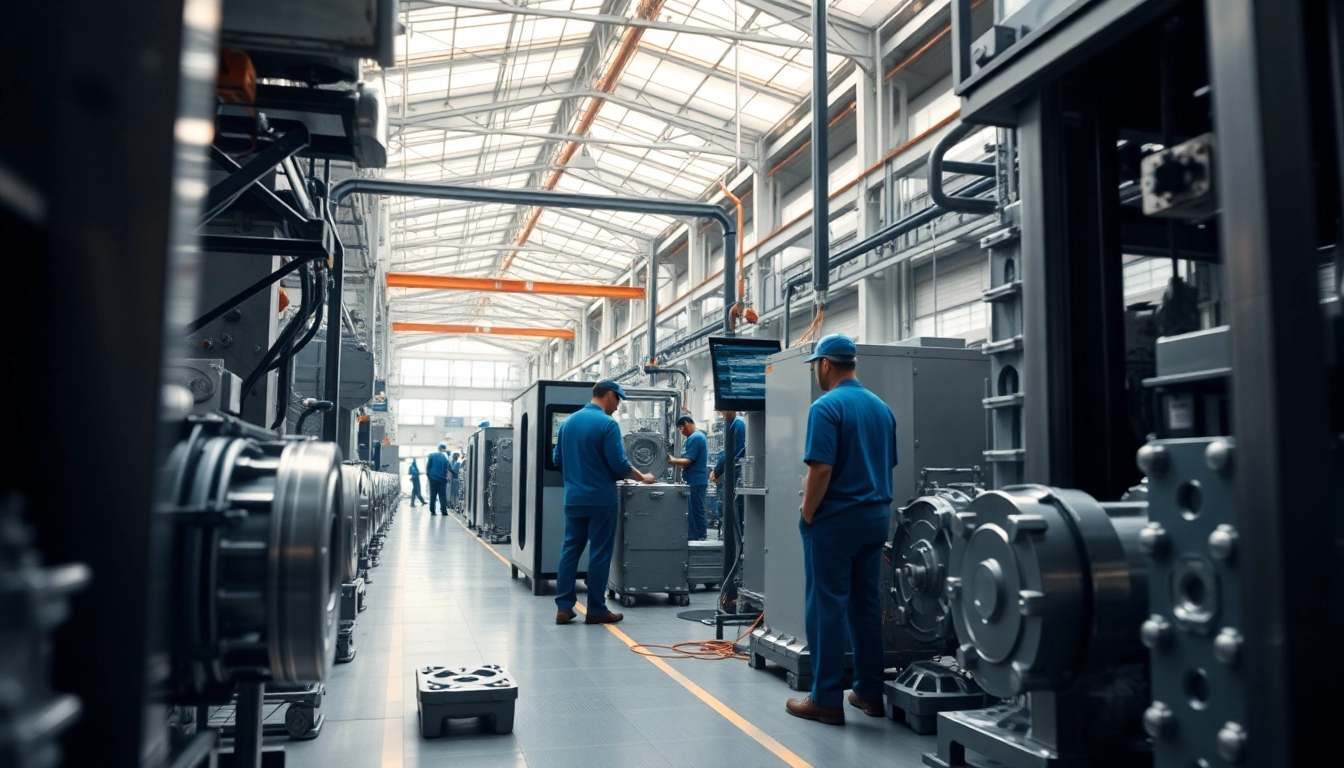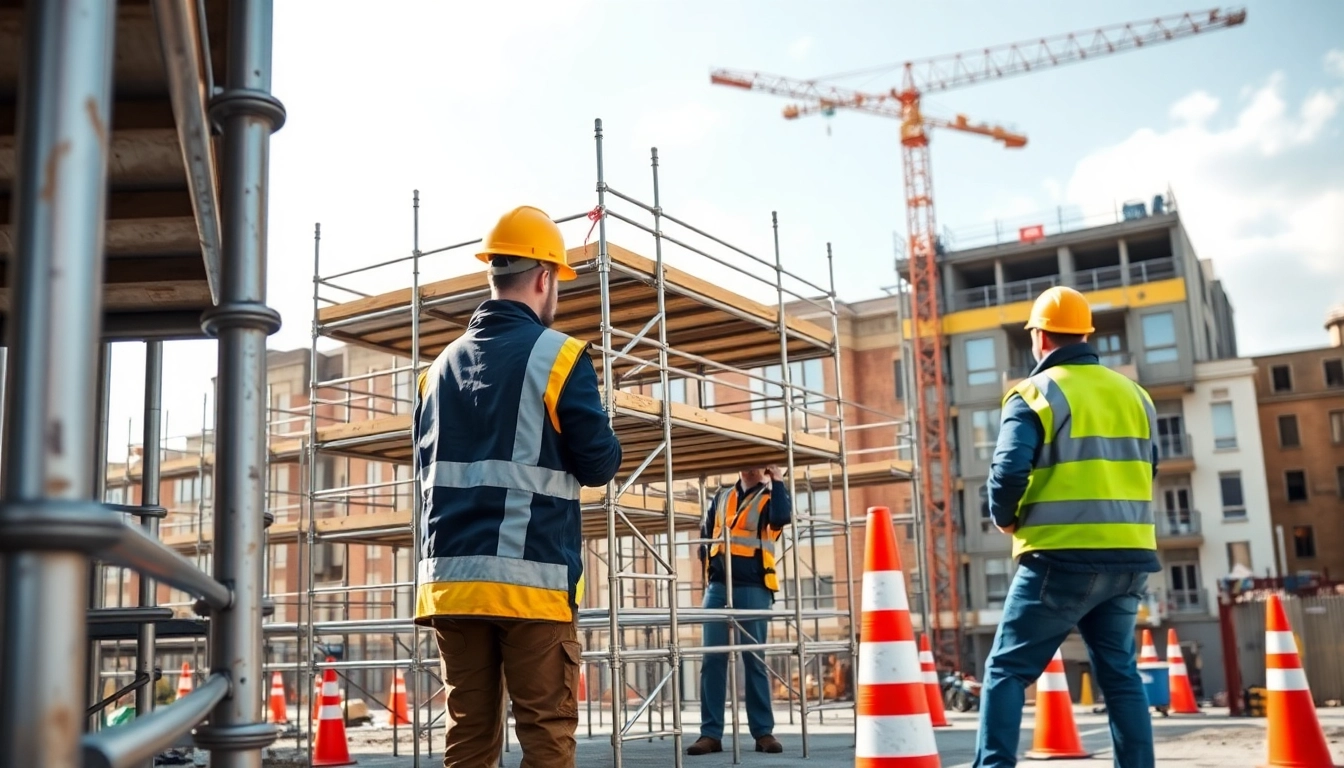Understanding Diecasting in Malaysia
Diecasting is a crucial manufacturing process that allows for the production of intricate metal components with high precision and efficiency. In Malaysia, the diecasting industry has seen significant growth, establishing the country as a regional leader. As a diecaster malaysia, companies are harnessing advanced technologies and skilled labor to meet the rising demand for high-quality metal components across various sectors, including automotive, aerospace, and consumer goods.
What is Diecasting?
Diecasting is a manufacturing process that involves forcing molten metal into a mold cavity. The molds, known as dies, are made to exact specifications, allowing the diecast products to achieve tight tolerances and complex geometries. This process is particularly well-suited for high-volume production of metal parts, making it an essential technique in modern manufacturing.
Significance of Diecasting in Manufacturing
The significance of diecasting in manufacturing cannot be overstated. It provides several advantages over traditional manufacturing methods, including:
- High Precision: Diecasting allows for the creation of complex shapes with tight tolerances.
- Cost-Effectiveness: Once the dies are created, the cost per part decreases significantly with increased production volumes.
- Material Efficiency: Minimal waste is produced during the diecasting process compared to other methods.
- Superior Surface Finish: Diecast products typically have a smooth surface, reducing the need for secondary finishing operations.
- Strength and Durability: The rapid cooling of the metal in the mold leads to a denser structure, enhancing the mechanical properties of the final product.
Industry Opportunities for Malaysia
Malaysia’s strategic location, coupled with its developing manufacturing capabilities, presents numerous opportunities for growth in the diecasting sector. The country’s robust infrastructure, access to global markets, and government incentives for manufacturing investments position it favorably for attracting foreign investors and expanding local enterprises.
Moreover, the increasing demand for lightweight components in industries such as automotive and aerospace has prompted diecasters in Malaysia to adopt innovative practices to enhance their offerings. Emphasizing sustainability and advanced technologies will further secure Malaysia’s position in the global diecasting market.
The Diecasting Process Explained
Step-by-Step Guide to Diecasting
The diecasting process can be broken down into several key steps:
- Preparation: The diecasting machine is prepped, and the dies are installed. Proper maintenance is essential for consistent results.
- Melting: Metal is heated in a furnace until it reaches a molten state. Common metals used include aluminum, zinc, and magnesium.
- Injection: The molten metal is injected into the die under high pressure, filling the cavity quickly to ensure a complete shape.
- Cooling: The metal is allowed to cool and solidify within the die, which enhances the integrity of the final product.
- Ejection: Once cooled, the die opens, and the finished part is ejected for further processing or finishing.
- Trimming: Any excess material (flash) is removed from the part to ensure it meets the specifications.
Materials Used in Diecasting
Several materials are commonly used in diecasting, each chosen for its specific properties:
- Aluminum: Known for its lightweight and corrosion resistance, making it ideal for automotive and aerospace applications.
- Zinc: Offers excellent fluidity and is often used for smaller, intricate parts.
- Magnesium: The lightest structural metal, favored for applications requiring weight reduction.
- Copper: Offers superior thermal conductivity, used in applications such as electrical components.
Common Challenges in Diecasting Production
While diecasting provides many advantages, there are challenges inherent in the process that manufacturers must navigate:
- Die Wear: Continuous use of dies can lead to wear and tear, impacting part quality.
- Defects: Issues such as gas porosity or surface imperfections can arise, necessitating quality control measures.
- Material Limitations: Not all metals are suitable for diecasting due to their melting points or reactivity.
- Cycle Time: Achieving optimal cycle time while maintaining quality can be a balancing act.
Quality Control in Diecasting Manufacturing
Standards and Certifications for Diecast Products
Quality control is paramount in diecasting manufacturing to ensure that products meet industry standards. Various certifications, such as ISO 9001 and TS 16949 for automotive parts, guide manufacturers in implementing robust quality systems. These standards help ensure that products are reliable, safe, and fit for purpose.
Best Practices for Quality Assurance
Implementing best practices in quality assurance can significantly improve the outcomes of diecasting projects:
- Regular Inspections: Conduct frequent inspections throughout the production process to catch defects early.
- Employee Training: Equip personnel with the necessary skills and knowledge to operate machinery and understand quality standards.
- Feedback Loops: Establish communication channels for feedback between different departments, ensuring a collaborative approach to quality management.
Case Studies of Successful Quality Implementation
Several Malaysian companies have successfully implemented quality control measures in their diecasting operations. For example, a local diecaster invested in advanced inspection technologies, reducing defect rates by 30%. Such initiatives not only enhance product quality but also improve customer satisfaction and engagement.
Future Trends in Diecasting
Technological Advancements on the Horizon
As the manufacturing landscape evolves, diecasting technologies are also advancing. The introduction of automation and Industry 4.0 principles promises to enhance efficiency and reduce costs. For instance, the integration of robotics in the diecasting process can streamline production, improve safety, and ensure precision.
Sustainability in Diecasting Practices
Increasingly, sustainability is becoming a pivotal concern in diecasting. Manufacturers are focusing on reducing waste, recycling materials, and implementing energy-efficient processes. Techniques such as using recyclable metals and optimizing heating processes can significantly lessen the environmental impact of diecasting operations.
Predictions for the Diecasting Market by 2025
Market analysts predict that the diecasting industry will continue to grow, driven by demand in the automotive and aerospace sectors. Innovations in materials and techniques are expected to emerge, focusing on lightweight and durable components. With Malaysia positioned as a hub for manufacturing excellence, the prospects for local diecasters look promising.
Choosing the Right Diecaster in Malaysia
Analyzing Competitor Offerings in the Market
When selecting a diecaster, it is crucial to analyze competitor offerings within the market. Understanding the strengths and weaknesses of various manufacturers can help businesses make informed decisions. Factors to consider include production capabilities, quality certifications, and customer testimonials.
Factors to Consider When Selecting a Diecaster
Several key factors should influence the selection of a diecaster in Malaysia:
- Expertise and Experience: Look for manufacturers with a proven track record and industry experience.
- Technology and Equipment: Evaluate the machinery and technology used in production to ensure it meets industry standards.
- Customization Capabilities: Assess the ability to meet specific design requirements and volumes.
- Supply Chain Reliability: Maintain partnerships with suppliers who ensure consistent material quality and delivery times.
Building Long-Term Partnerships in Manufacturing
Establishing long-term partnerships with a reliable diecaster can provide significant advantages. Such collaborations can lead to improved communication, better understanding of needs, and enhancements in innovation and product development. Trust and transparency are key to fostering these relationships, ultimately benefiting both parties.

